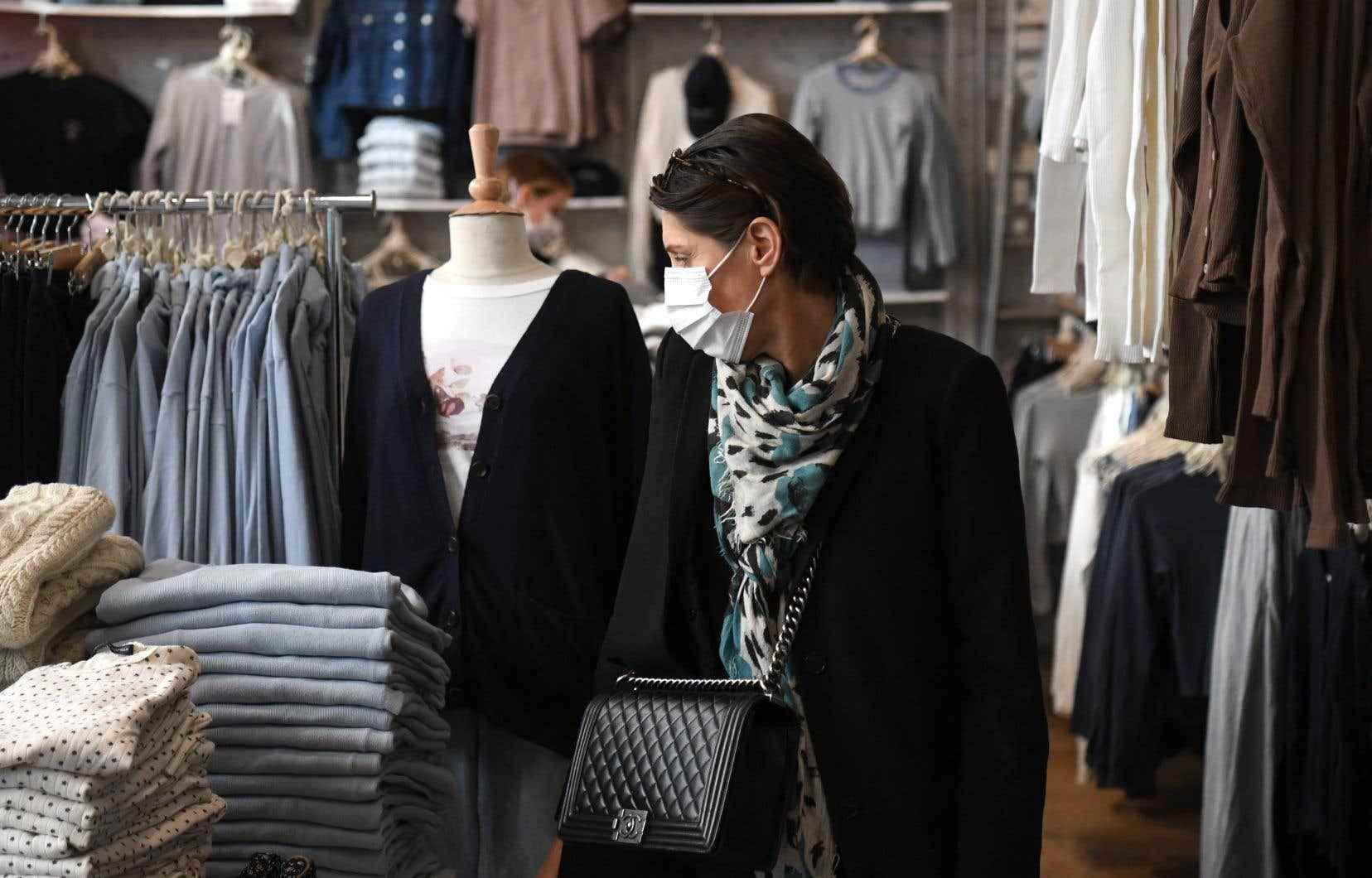This text is taken from the Courrier de la Planète. Click here to subscribe.
Work is underway in France to make it mandatory as soon as possible, probably by 2024, environmental labeling on all new clothing sold. The objective is to make consumers aware of the ecological footprint of these products. Should Canada be inspired and learn from this approach?
In 2021 and 2022, 11 organizations and companies have been commissioned by the French Ministry of Ecological Transition to test various methods for assessing the environmental impact of clothing and footwear textiles.
For example, the Union of Textile Industries (UIT), which represents 2,200 companies in France, proposed a label on which several pieces of information would be written. We would know if the material is recycled, organic or natural, and in what proportion. With a view to traceability, the places of weaving, dyeing and making of the pieces would be indicated. The label would also highlight any certifications obtained by the company or the product.
It would also contain the overall environmental impact, calculated according to 12 environmental indicators defined by the European PEF (Product Environmental Footprint) benchmark, such as the consequences on climate change, the depletion of water resources and the use of natural resources. mineral. This impact, along with the product’s carbon footprint, would then be compared to the average score of a similar garment produced internationally.
“It should show that products made in France have a less harmful impact on the environment,” said ITU sustainable development manager Sophie Frachon.
A French government agency is evaluating all these systems in order to draw inspiration from them to present its own in March, then test it, explains Mr.me Frachon. On the form, she believes that the government will opt for a simple display, such as a grade from A to E, with the possibility of knowing more thanks to a QR code.
The European Commission also intends to adopt legislation on the matter in 2024, based on the work of a committee made up of members of the fashion industry.
Important limits
The idea of an environmental display is welcomed with open arms by the co-founder of the eco-responsible brand Loom, Julia Faure. A member of a group called En mode climat, she points out, however, that the PEF standard and the vast majority of the methods submitted omit an important detail, because the main ecological problem in the fashion sector is overproduction.
En mode climat, which also participated in the ministry’s project, therefore proposes a method that penalizes practices that encourage overconsumption and discourage repair. “There are low prices, which are linked to outsourcing to Asian countries. There is also novelty, with the rapid renewal of collections, and promotions, ”says Mme Faure.
It should show that products made in France have a less harmful impact on the environment.
The latter fears that their suggestions will be rejected. She notes that several companies in the fast fashion, whose business model is based on overconsumption, like H&M, are part of the European committee which is in the process of developing these rules. This industry is unlikely to penalize itself, she believes.
View of Quebec
Circular economy advisor in the Quebec textile industry, Marianne-Coquelicot Mercier shares Ms.me Faure: the environmental assessment risks being incomplete if it does not take into account the lifespan of the garment.
However, she is delighted that France is taking a step in the right direction. “It will be very interesting to watch how the Europeans will take this subject forward. We will be able to follow in their footsteps, ”judge Mme Mercier.
The Europeans are ahead of Canada, where the communication of environmental information is purely voluntary. However, to establish responsible labeling, companies must first be encouraged to look good and adopt better practices, she believes.
